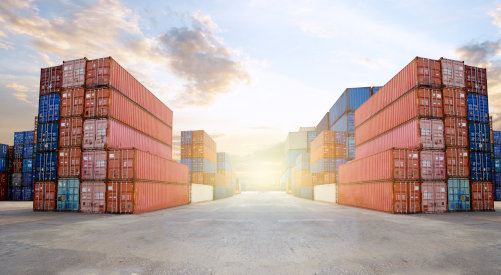While money is commonly laundered through the financial system and through physical movement of money, it can also be laundered through the physical movement of goods through the trade system. This is known as trade-based money laundering and is often used to disguise proceeds of crime.
Trade-based money laundering techniques
Trade-based money laundering can be achieved through a range of techniques as outlined by the Financial Action Task Force (FATF).
Over- and under-invoicing of goods and services
By invoicing a good or service below market value, an exporter can transfer value to an importer. Conversely, by invoicing above market value, the exporter receives value from the importer.
These arrangements only take place when the importer and exporter have agreed to collude to transfer additional value. They may in fact even be owned by the same company.
Multiple invoicing of goods and services
Money may be laundered through issuing more than one invoice for the same international trade transaction, to support multiple payments for the same shipment of goods or delivery of services.
Over- and under-shipment of goods and services
A money launderer can overstate or understate the quantity of goods being shipped or services being provided. In some cases, goods may not be shipped at all.
Falsely described goods and services
Misrepresenting the quality or type of a good or service can also be used to launder money. For example, an exporter may ship a relatively inexpensive good and falsely invoice it as a more expensive item or an entirely different item.
Risk indicators for trade-based money laundering
A recent joint report between the FATF and the Egmont Group outlines three main risk indicators for trade-based money laundering:
- Structural risk indicators.
- Trade document and commodity risk indicators.
- Account and transaction activity risk indicators.
Structural risk indicators
Structural risk indicators include:
- Unusually complex and illogical corporate structures such as the use of shell companies registered in high-risk jurisdictions.
- The entity is registered at a residential address and doesn’t carry on typical business activities.
- Lack of online presence of business.
- Owners lack management experience and appear to be concealing the beneficial owners.
- The entity has a record of being involved in past criminal investigations.
- Staff numbers are inconsistent with trade volume.
- There are unexplained periods of dormancy.
- Trade activity is inconsistent with the stated line of business.
- Complex trade deals involving numerous unrelated third-party intermediaries.
- User of shipping routes that are inconsistent with standard business practices.
- Unconventional or overly complex use of financial products.
- Display of unreasonably low profit margins, e.g. reselling commodities below purchase price.
- Purchase of commodities exceeding the entity’s financial capabilities.
- A newly formed entity engages in high-volume and high-value trade activity.
Trade document and commodity risk indicators
Risk indicators relating to trade documents and commodities include:
- Contracts, invoices or other trade documents have inconsistencies, do not make commercial sense, or have vague descriptions of the traded commodities.
- Insufficient trade or customs documents supporting transactions.
- Contracts supporting complex or regular trade transactions appear to be unusually simple.
- A mismatch between imports/exports and foreign bank transfers.
- The use of falsified documents.
- Shipments of commodities are routed through multiple jurisdictions without justification.
Account and transaction activity risk indicators
Risk indicators relating to account and transaction activity include:
- A trade entity makes last minute changes to payment arrangements for the transaction.
- Number and value of transactions are inconsistent with stated business activity.
- An account has rapid movement of high-volume transactions and a small end-of-day balance.
- Payment for imported commodities is made by an entity other than the consignee.
- Cash deposits or other transactions consistently just below reporting thresholds.
- A rapid burst in transaction activity followed by a period of dormancy.
- Unusual payment activity relevant to the sector.
- Routing of payments through multiple countries, ending up back in the originating country.
Conclusion
While trade-based money laundering has received relatively little attention compared to money laundering through the financial system and physical movement of money, the international trade system is subject to a wide range of risks that can be exploited by criminal organisations to launder money.



